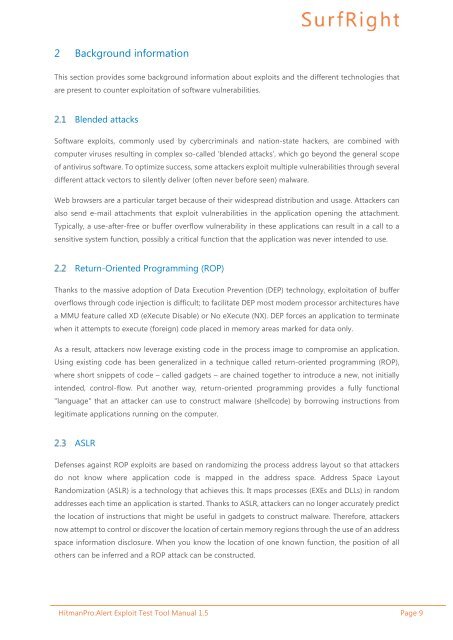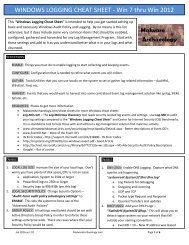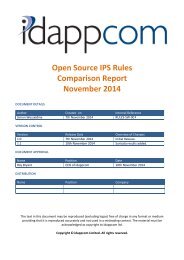Exploit Test Tool Manual
Exploit Test Tool Manual
Exploit Test Tool Manual
Create successful ePaper yourself
Turn your PDF publications into a flip-book with our unique Google optimized e-Paper software.
2 Background information<br />
This section provides some background information about exploits and the different technologies that<br />
are present to counter exploitation of software vulnerabilities.<br />
Blended attacks<br />
Software exploits, commonly used by cybercriminals and nation-state hackers, are combined with<br />
computer viruses resulting in complex so-called ‘blended attacks’, which go beyond the general scope<br />
of antivirus software. To optimize success, some attackers exploit multiple vulnerabilities through several<br />
different attack vectors to silently deliver (often never before seen) malware.<br />
Web browsers are a particular target because of their widespread distribution and usage. Attackers can<br />
also send e-mail attachments that exploit vulnerabilities in the application opening the attachment.<br />
Typically, a use-after-free or buffer overflow vulnerability in these applications can result in a call to a<br />
sensitive system function, possibly a critical function that the application was never intended to use.<br />
Return-Oriented Programming (ROP)<br />
Thanks to the massive adoption of Data Execution Prevention (DEP) technology, exploitation of buffer<br />
overflows through code injection is difficult; to facilitate DEP most modern processor architectures have<br />
a MMU feature called XD (eXecute Disable) or No eXecute (NX). DEP forces an application to terminate<br />
when it attempts to execute (foreign) code placed in memory areas marked for data only.<br />
As a result, attackers now leverage existing code in the process image to compromise an application.<br />
Using existing code has been generalized in a technique called return-oriented programming (ROP),<br />
where short snippets of code – called gadgets – are chained together to introduce a new, not initially<br />
intended, control-flow. Put another way, return-oriented programming provides a fully functional<br />
"language" that an attacker can use to construct malware (shellcode) by borrowing instructions from<br />
legitimate applications running on the computer.<br />
ASLR<br />
Defenses against ROP exploits are based on randomizing the process address layout so that attackers<br />
do not know where application code is mapped in the address space. Address Space Layout<br />
Randomization (ASLR) is a technology that achieves this. It maps processes (EXEs and DLLs) in random<br />
addresses each time an application is started. Thanks to ASLR, attackers can no longer accurately predict<br />
the location of instructions that might be useful in gadgets to construct malware. Therefore, attackers<br />
now attempt to control or discover the location of certain memory regions through the use of an address<br />
space information disclosure. When you know the location of one known function, the position of all<br />
others can be inferred and a ROP attack can be constructed.<br />
HitmanPro.Alert <strong>Exploit</strong> <strong>Test</strong> <strong>Tool</strong> <strong>Manual</strong> 1.5 Page 9







